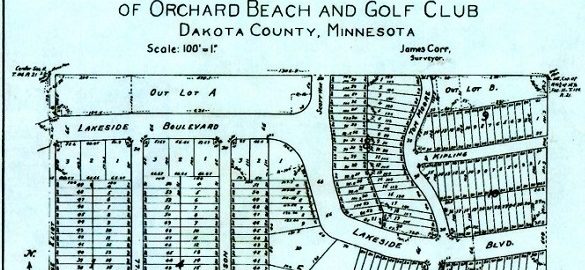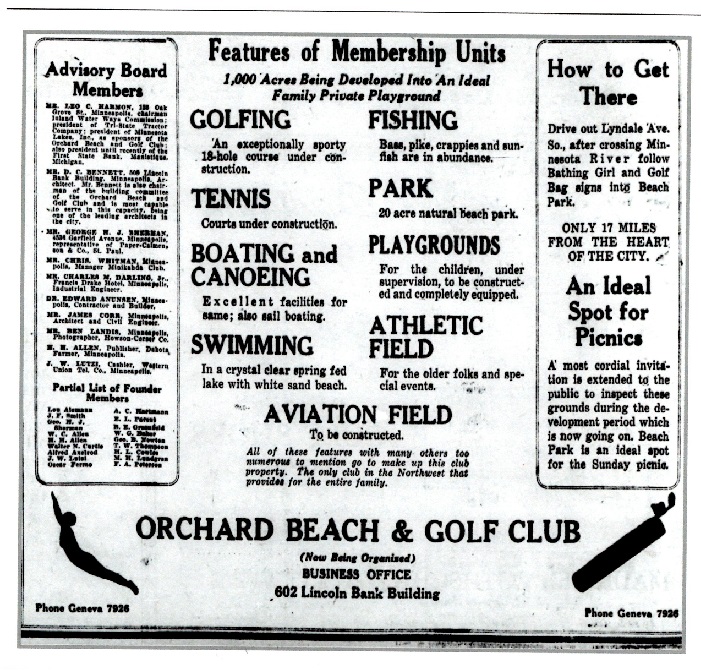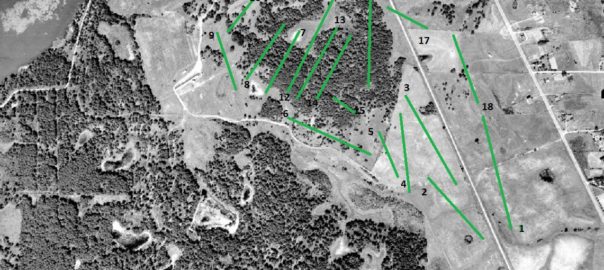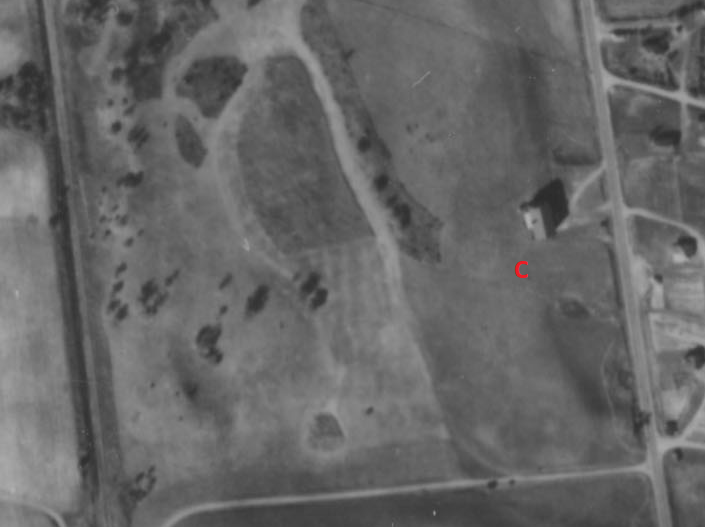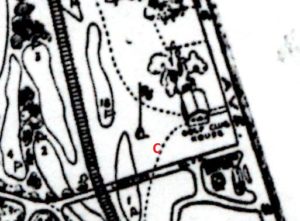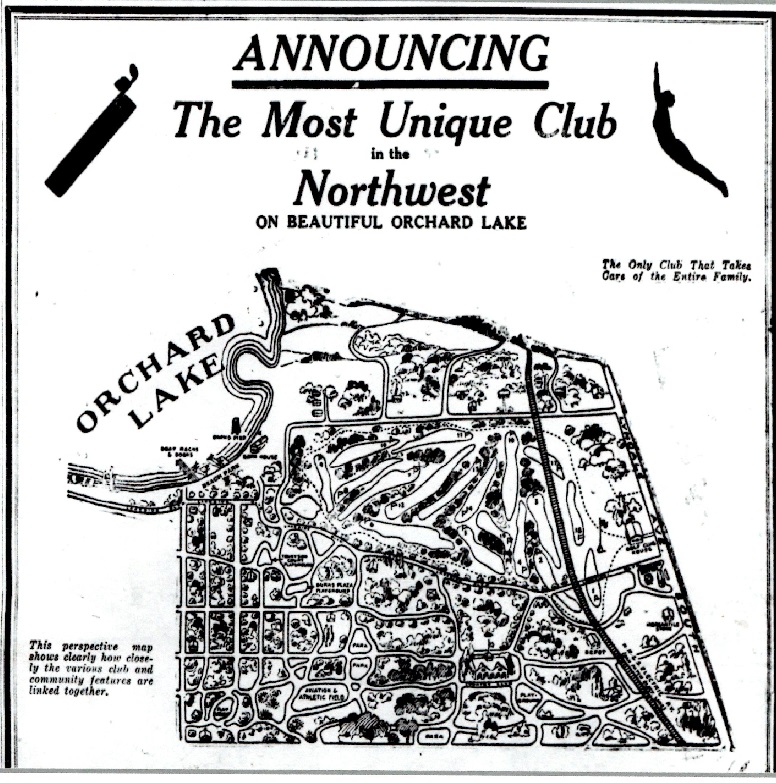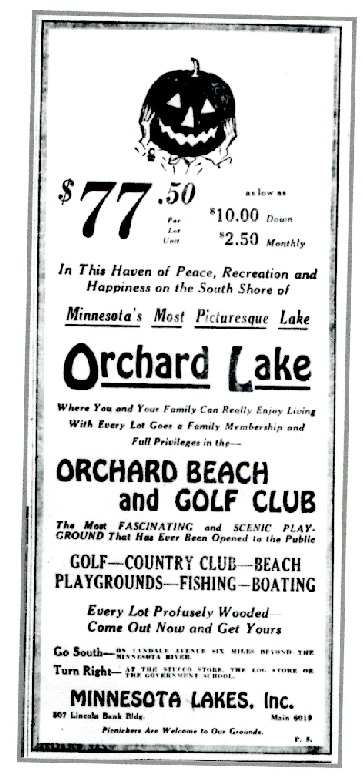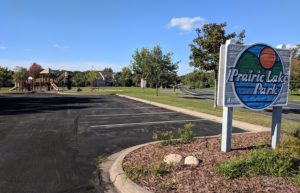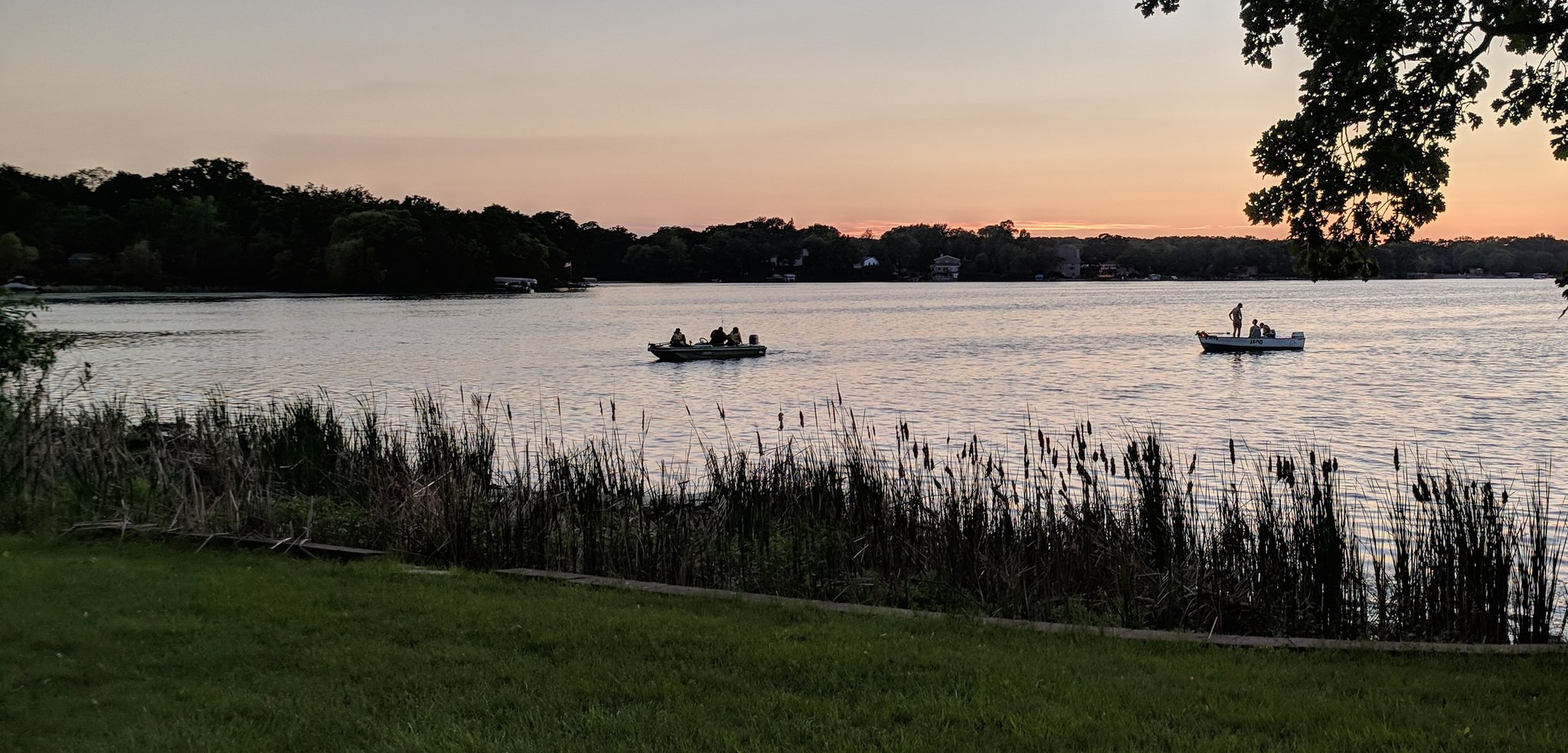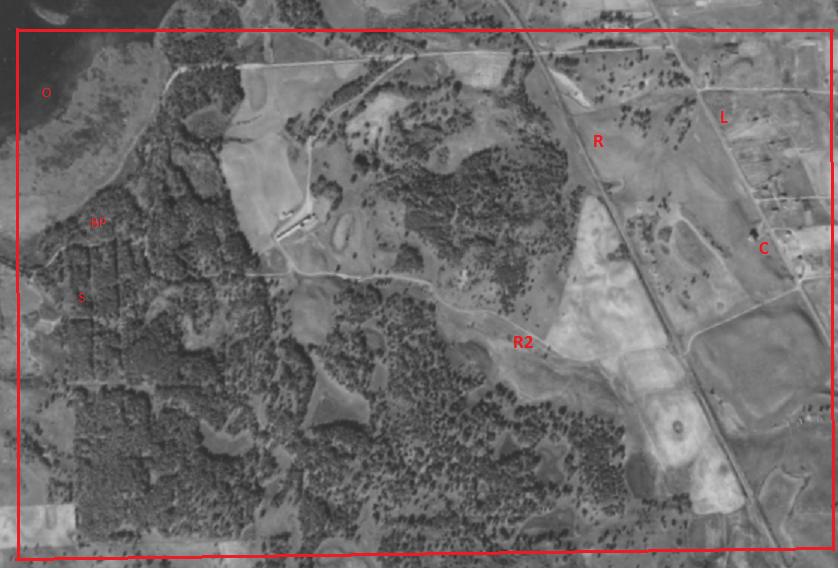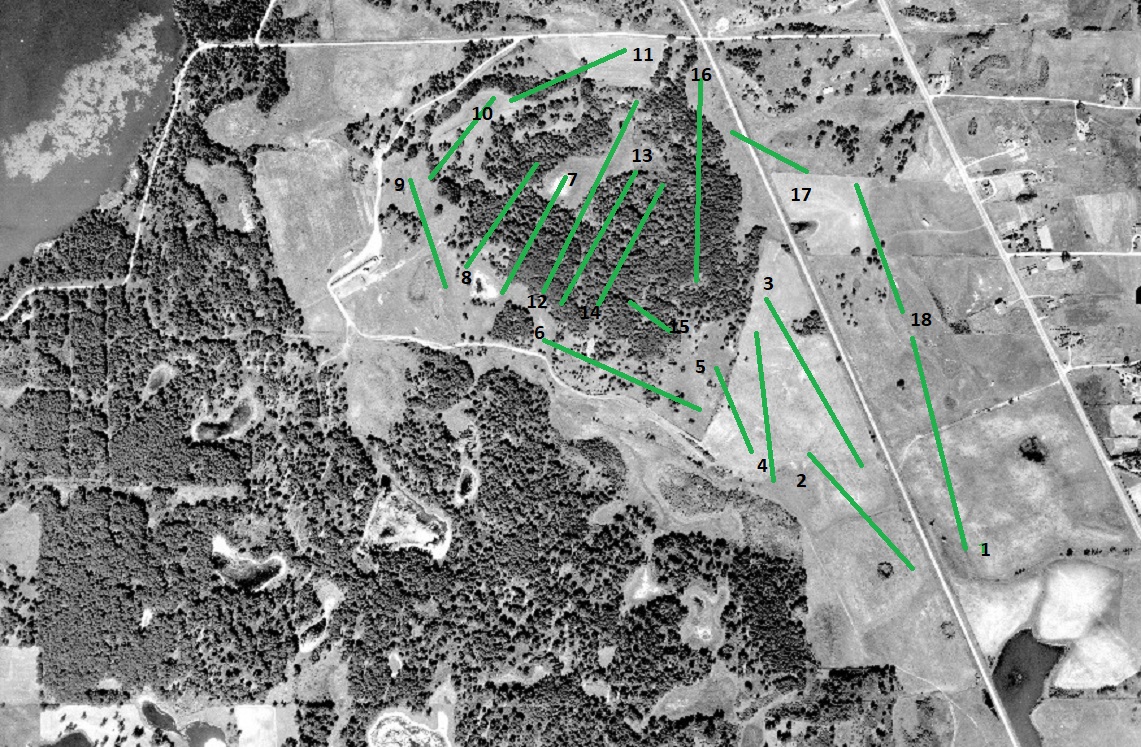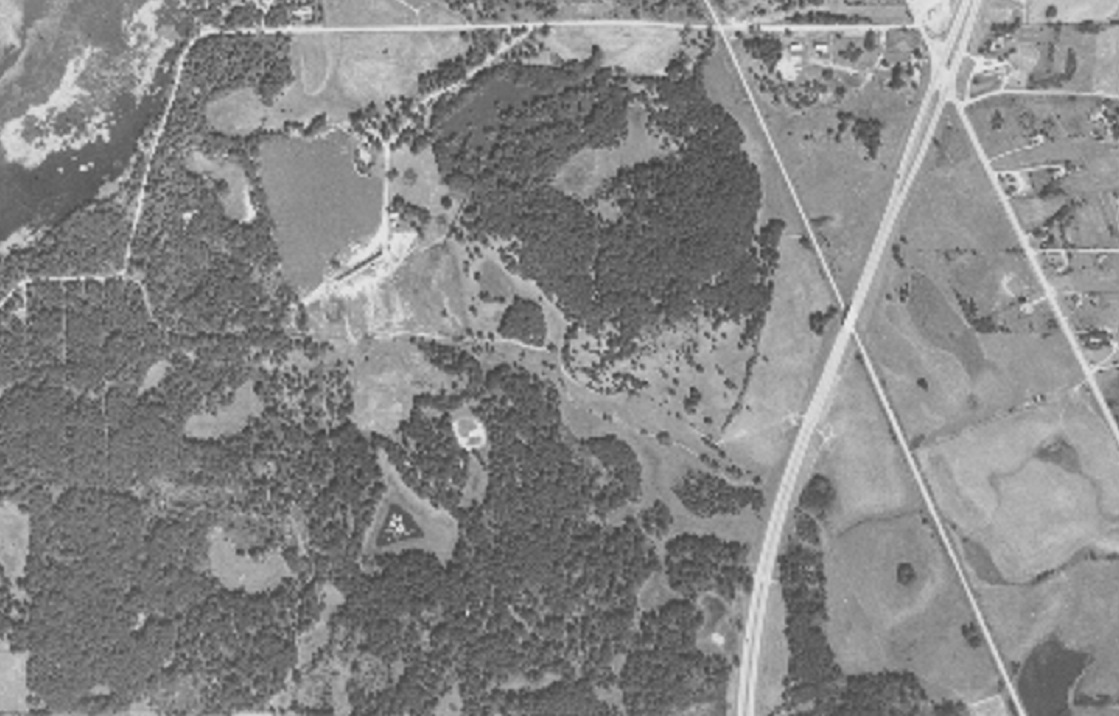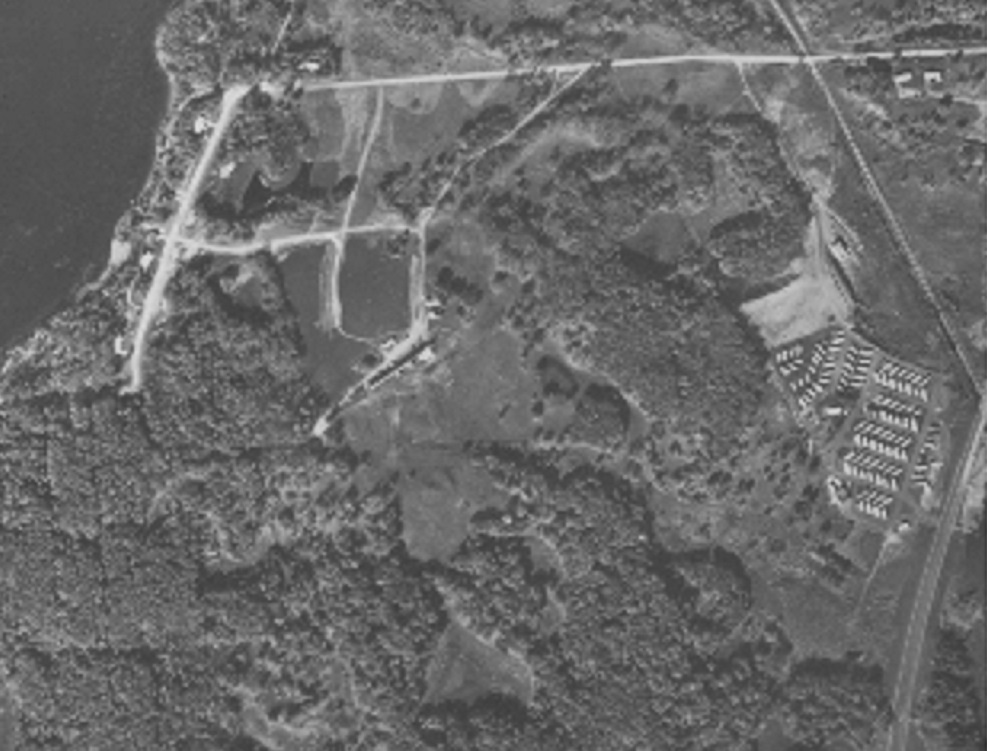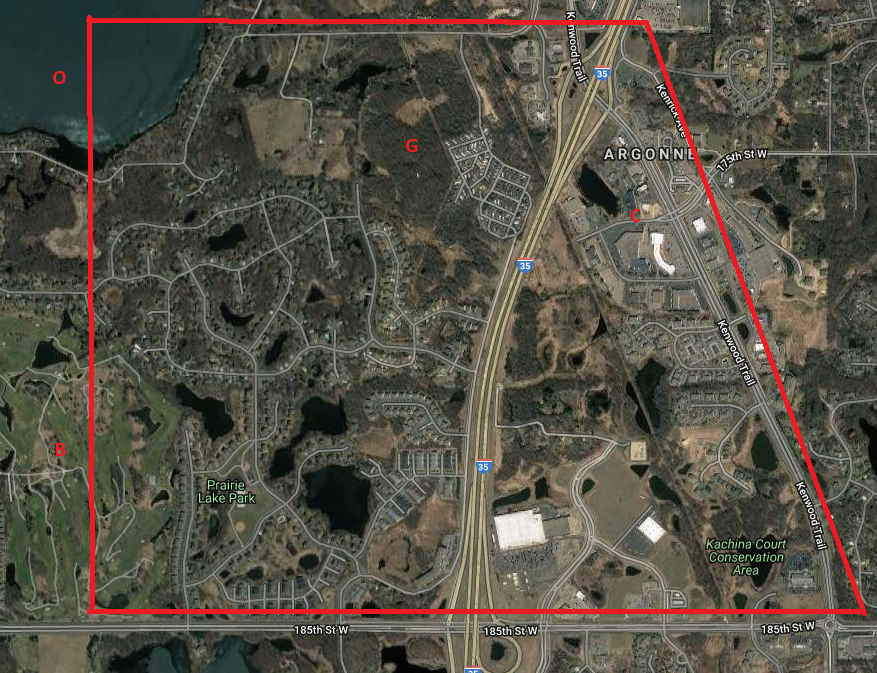Time should have been on the side of Orchard Beach and Golf Club.
The 1920s were a wonderful time for golf — a boom time. A Minnesota chronology of golf courses published in 2002 lists 71 courses built in the 1920s, and in fact many more that were built weren’t counted in the chronology because they had been long-since abandoned. My best guess is that well over 100 Minnesota golf courses witnessed their first shank-and-a-triple-bogey in the ’20s.
Why all of this building? It was the economy, stu … oh, never mind, no name-calling today. The decade was called the Roaring Twenties for a reason. The middle class for the first time had enough expendable income to take up golf, the wealthy had more means with which to launch courses, and experts and novices alike had access to loading up the Hupmobile with hickory shafts and heading to the first tee.
Community courses, whether municipal or privately owned, popped up almost everywhere. Resort courses appeared, too, whether or not they were established for the purpose of attracting out-of-town golfers. Among them: Breezy Point (1920), Ruttger’s Bay (1922) and Tianna (1925), to name just three. Edina Country Club, originally named Thorpe Country Club and then simply The Country Club, was founded in 1923, a bauble for a large housing development built to accommodate and entertain Twin Cities suburbanites. The golf course and the city’s Country Club District became rousing successes.
So, why not Orchard Beach?
One would think, among this boom, there would have been opportunity for a place like Orchard Beach Golf and Country Club. The project was ambitious but the goal sensible: to build a golf-and-housing development less than 20 miles from downtown Minneapolis in northwestern Lakeville.
Orchard Beach and Golf Club did in fact get off the ground — like one of those 10-winged contraptions you see in old aviation films that lifts off for two seconds before folding up into a garbage heap. The project lasted less than two years and carved onto the Lakeville landscape little more than a small building, a couple of roads and a few strips of cleared land.
The question is, why did it fail?
Afraid I don’t have a good answer. Leo Harmon is the person who would know, but he left us 66 years ago.
Orchard Beach and GC presumably was the brainchild of one Leo Clinton Harmon, a Michigander who left his positions of stature to move to Minnesota in 1926. A former bank president, lumber magnate and entrepreneur (shoes, leather, electricity and baby carriages, among other ventures) in Schoolcraft County of the Upper Peninsula, Harmon left the small city of Manistique in ’26 and, according to a resume’, “moved to Minneapolis to engage in some special reorganization work for the Backus-Brooks Co., and the International Paper Company.” (The resume’ was “prepared by a friend of Mr. Harmon,” apparently published in 1929 and forwarded to me by the Gulliver Historical Society, which is in Schoolcraft County. Marilyn Fischer, president of the Gulliver HS, wrote in correspondence that Harmon is considered one of the “Great Men in Manistique’s History,” and regard for Harmon was so great that one publication held that Harmon claimed to have first devised the use of white safety stripes on highways.)
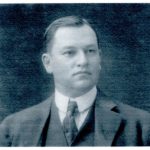
Harmon, though a native South Dakotan, former Montanan and longtime Michigander, was familiar with Minnesota. His father was Capt. William Harmon, who served in the famed First Minnesota Volunteer Infantry Regiment in the U.S. Civil War. Leo’s grandfather, Allen Harmon, lived in St. Anthony and Minneapolis, and the Harmon Place Historic District in Minneapolis is named after him. William Harmon operated steamboats between Minneapolis and Anoka and owned the Mississippi River steamer H.M. Rice.
If there were motives for Harmon, at age 54, to emerge from the Upper Michigan forest, where he presumably was wealthy and at least regionally renowned, and move to Minnesota, they are unclear. There is record of him having visited St. Paul on a business trip in 1924; its exact aims are unknown. But at some point, he turned his eyes toward a wooded, lakeside plot in Lakeville, at the time a small town of only about 500.
In October 1926, Harmon, along with Charles R. Hutchenson and M.P. LaFleur of Minneapolis, established Minnesota Lakes Inc. Real Estate, with a charter in Delaware. I failed to dig up any background on Hutcheson, but M.P. LaFleur presumably was Maynard Potter LaFleur, a World War I aviator and former professional hockey player from Eveleth, Minn., who was described in a 1982 Minneapolis Tribune story as a “real estate wheeler-dealer.” He also was dubbed “the Duke of Marquette” because he owned so much land on Marquette Avenue in Minneapolis.
On March 7, 1927, a plat map covering part of the area near Orchard Lake in Lakeville was filed with Dakota County. The area was called Club Park Addition No. 1 of Orchard Beach and Golf Club and included features hearkening back to British literature: Tennyson Court, Burns Plaza, and streets named Longfellow, Byron, Emerson and Milton, among others. (Irony: Wasn’t it Milton who wrote “Paradise Lost”?)
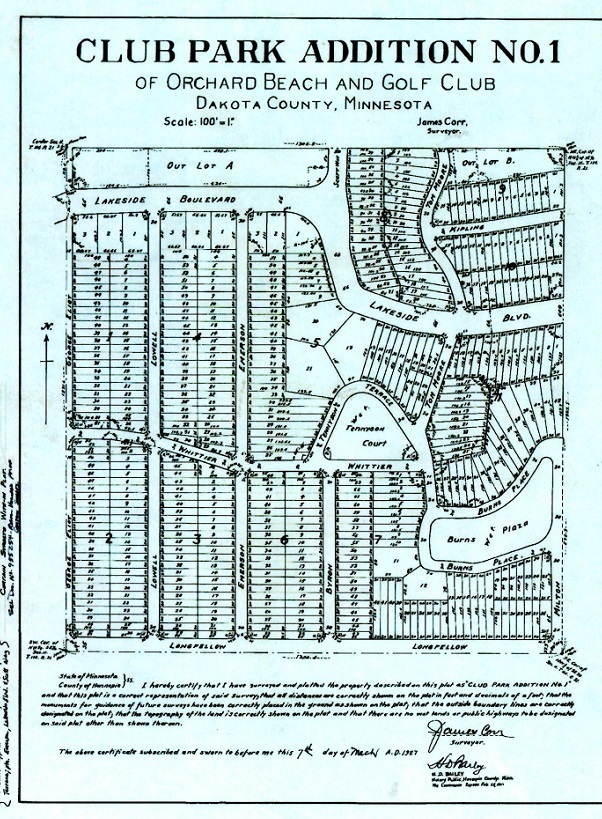
The first newspaper mention of Orchard Beach and Golf Club that I can find came in the June 11, 1927, edition of the Minneapolis Tribune, with a large advertisement detailing a proposed development with golfing, fishing, tennis, playgrounds and more — “An Ideal Family Private Playground. … Now Being Organized.” The ad featured a listing of advisory board members, with Harmon at the top:
“Mr. Leo C. Harmon, 185 Oak Grove St., Minneapolis, chairman, Inland Water Ways Commission; president of Tri-State Tractor Company; president of Minnesota Lakes, Inc. as sponsors of Orchard Beach and golf club; also president until recently of the First State Bank, Manistique, Michigan.”
Among the nine other advisory board members were D.C. Bennett, Minneapolis architect; Chris Whitman, manager of The Minikahda Club in Minneapolis (Minikahda Club records list Whitman as its manager from 1916-28); and James Corr of Minneapolis, an architect and civil engineer who coincidentally was listed as surveyor of the Orchard Beach property in the aforementioned plat map.
The day after the ad appeared, the Minneapolis Tribune of June 12, 1927, published a short story headlined “Orchard Club Will Feature Recreation.” “Approximately 1,000 acres of land are being developed for the Orchard Beach and Golf Club, 17 miles from Minneapolis,” the story began. “A feature of the project will be an 18-hole golf course. Charles Harney of Chicago, amateur champion of upper Michigan, is here to lay out the course.”
There is a possible Harney-Harmon connection here. Harney lived in Escanaba, Mich., an hour’s drive from Harmon in Manistique, and won the 1921 Upper Peninsula Golf Association championship. The proposed routing of the Orchard Beach golf course, presumably executed by Harney, appears solid from a golf standpoint, and the prospects were promising, given the varied terrain.
I was unable, however, to find any evidence that Harmon ever did any other golf-course design work.
As mentioned in my previous post on Orchard Beach, it’s clear that work on the golf course and development started in 1926 or 1927, with some land cleared for roads and golf holes. It’s also clear that work stopped abruptly, probably not even 10 percent in. The most plausible explanation is money, that Harmon and/or his investors ran into issues that killed the development. Yet there is no verifiable indication that that was the case.
Leo Harmon moved on from Minnesota. Quickly, it seems. The resume’ prepared by his friend lists him as president of the Mid-West Tractor Company of Chicago from 1927-29. “In the spring of 1929,” the resume reads, “he sold his interest in that business and at the request of Colonel Francis Knox the General-manager of the 28 Hearst (news)papers, he was retained to assist in the needed re-organization of the Hearst South Street plant in New York City where Mr. Harmon served for about two years as the Asst. Business-manager of the New York Evening Journal.”
The resume’ ends at that point. Harmon moved to California sometime in the 1930s and died at age 80 on May 25, 1952, in Beverly Hills.
By then, Orchard Lake and Golf Club was a most distant memory, long since abaondoned.
